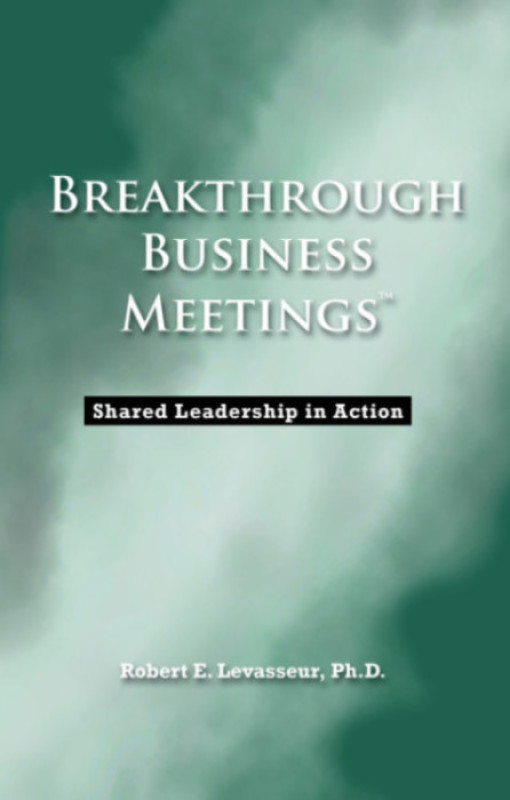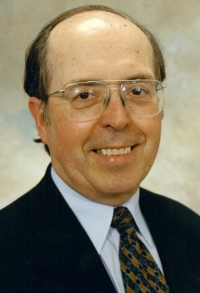Collaborative Leadership in Action: A Breakthrough Meeting
After years of study and experience in conducting hundreds of meetings, I developed a simple, common sense meeting management process called the Breakthrough Meeting System.
The Breakthrough Meeting System increases motivation and enhances productivity by giving participants a higher level of involvement in all aspects of a meeting, from premeeting planning through post-meeting follow up. Work done in the meeting to identify, prioritize, and resolve key issues by consensus is integrated with participants' ongoing work. This participative, priority-focused management process leads to breakthrough results.
The breakthrough meeting principles are so simple that you can start putting them into practice immediately. Here are some of the things that the system will do for your meetings:
It will motivate and enable meeting participants to act as a team.
In a traditional meeting, people start with differing goals and expectations.
In a breakthrough meeting, participants start with common goals and shared expectations and work together to achieve them.
It will enable participants to make decisions by true consensus.
In a traditional meeting, one group says ''white," another group says "black," and they compromise on "gray." In a breakthrough meeting, the entire group reaches a consensus on either white or black, because that's what everyone wants. Participants feel that they are working toward a common goal because they share in the decision to move in that direction.
It will energize participants to work enthusiastically to achieve goals.
In a traditional meeting, people often feel pressured to take on additional work, regardless of their current workload. This is one reason why so many people dread meetings, and why they often fail to participate actively.
In a breakthrough meeting, participation is by choice. It is free, natural, and spontaneous. Crucial problems are identified, prioritized, and worked on in a collaborative atmosphere. People feel involved, energized, and committed. Rather than looking forward to the meeting's end, participants are actually reluctant to cut it off. And they follow up enthusiastically because they have a stake in the shared outcome.
It will enable participants to work more efficiently and productively, both during and after the meeting.
In a traditional meeting, people are often confused about the importance of issues being discussed in relation to their ongoing work.
In a breakthrough meeting, participants prioritize issues and agree on the common work together. They are motivated to work through the issues during the meeting and to follow up on meeting outcomes because they see the relevance to their job. The meeting simplifies their work and makes them more productive.
It will enable participants to continue working effectively even if new members join the team or members move to other teams.
The breakthrough meeting principles are so powerful that they have a lasting impact on the way participants interact in meetings.
In an old-fashioned meeting, people wait for direction from the leader. They act like followers and must be repeatedly redirected. The loss of a current member or the arrival of a new member really slows the group down. And they bring their bad habits with them when they move on to other teams.
In a breakthrough meeting, participants share leadership responsibility. They are self-motivated, self-directed, and flexible. Because they are true participants, not followers, they take the arrival of a new member or the loss of a current member in stride. And they bring their new skills with them when they move on to other teams.
In devising the Breakthrough Meeting System, I avoided complicated academic theories. Instead, I focused on a handful of the most practical and powerful meeting enhancement methods.
I designed the system for results-oriented leaders who prefer to work with people in an open and creative way and who want to run meetings that empower participants to achieve breakthroughs in organization performance.
The breakthrough meeting principles apply to all meetings, whether large or small, informal (with no set agenda) or formal (with a tight structure and established time limits). They apply both to business meetings and to nonbusiness meetings, such as those of fraternal organizations, civic organizations, social groups, and neighborhood groups.
The system is as useful to new managers conducting their first meetings as it is to seasoned leaders who have run hundreds of meetings in business and non-business settings.
To learn more about designing and leading a collaborative meeting, read Breakthrough Business Meetings: Shared Leadership in Action.

